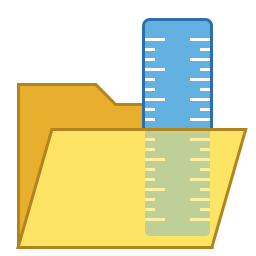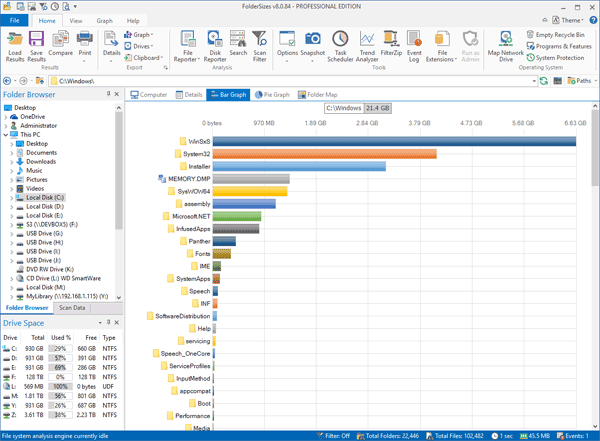

Allows you to view files based on age, size and other attributes Not only does the tool help identify duplicates, but it also highlights unused or temporary files that tend to take up large amounts of space. After all, a full disk leads to various performance issues and is likely to get your computer stuck.įolderSizes is a tool designed to help you monitor the space on your computer. 9.5. – 24.If you are regularly downloading multimedia or video games, then it may be a good idea to have a way to monitor the free space on your drives.

Support for direct entry of UNC network paths in all reports.Super-fast, in-memory database provides stunning performance.“Command Prompt from Here” in all context menus.Strong support for viewing allocated disk space (e.g.Flexible, multi-path oriented search and file reporting systems.Extremely configurable – colors, fonts, print options, etc.Integrates with the Windows shell context menu.Export reports in HTML, XML, CSV, and more.See total & free space for fixed, removable, network drives.FilterZip regular-expression based compression system.View local & network disk space usage by owner / group.View disk space utilization by file type / attributes.Isolate largest, oldest, duplicate, and temporary files.Fast, multi-threaded, network-aware file system scanning.Interactive, dynamic, full-color bar and pie graphs.Hierarchical folder map visualization (based upon treemap technology).Calculated date/time fields for folders, based upon their contents.

You can drill into any subfolder with a double-click (in the detail list or the graph image), allowing you to quickly locate the source of excessive hard drive space consumption. All within an intuitive and highly interactive user interface.įolderSizes generates detailed and graphical drive space usage reports on the fly, while it’s scanning your system. FolderSizes allows you to analyze your disk space, by displaying extensive data about each one, along with all the files they contain.įolderSizes can quickly isolate a variety of space-wasting files (such as large, temporary, and duplicate files) – plus, it reveals file distribution by type, attributes, size, owner, date, or filename length.


 0 kommentar(er)
0 kommentar(er)
